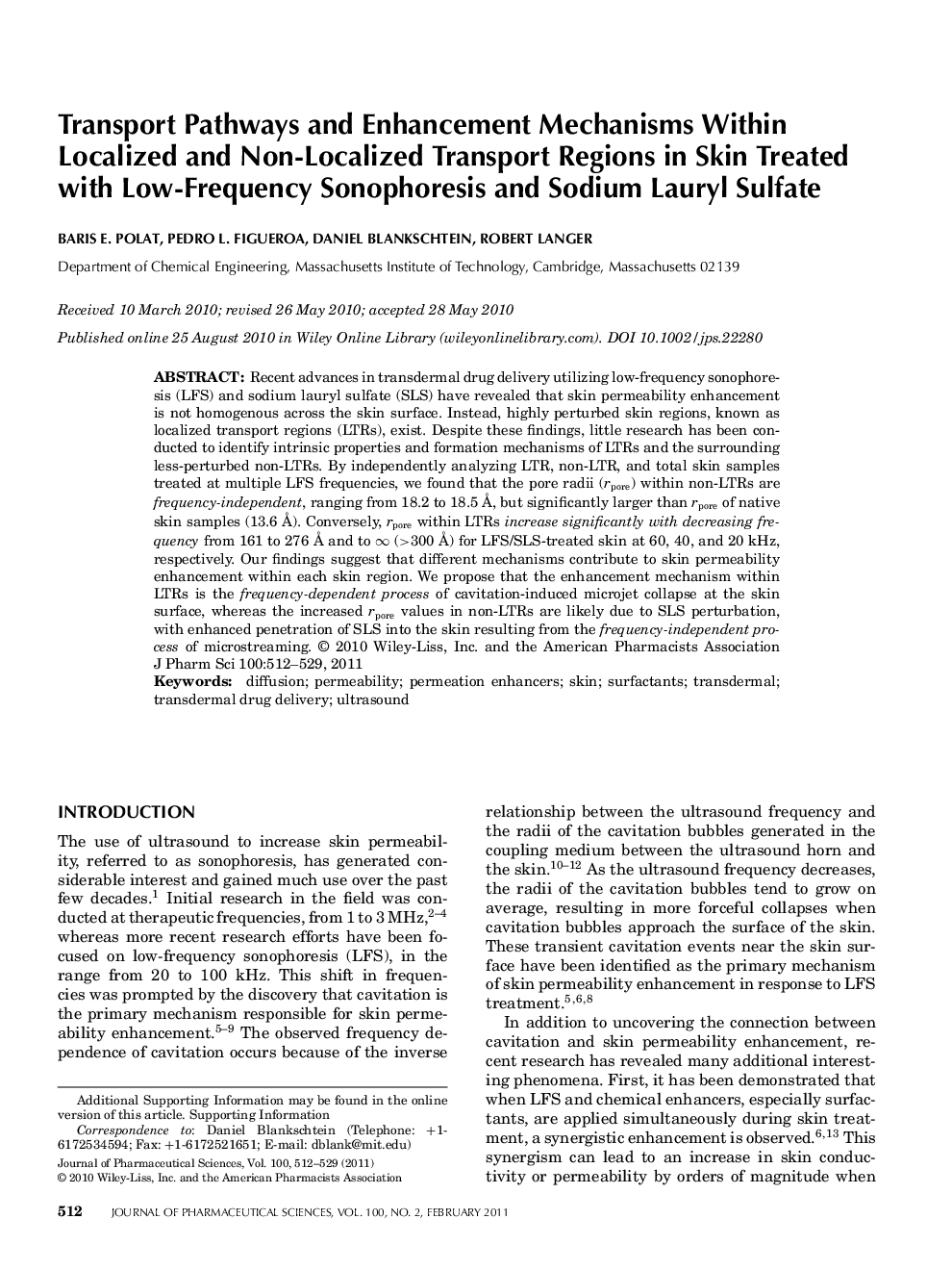| Article ID | Journal | Published Year | Pages | File Type |
|---|---|---|---|---|
| 2485566 | Journal of Pharmaceutical Sciences | 2011 | 18 Pages |
Abstract
Recent advances in transdermal drug delivery utilizing low-frequency sonophoresis (LFS) and sodium lauryl sulfate (SLS) have revealed that skin permeability enhancement is not homogenous across the skin surface. Instead, highly perturbed skin regions, known as localized transport regions (LTRs), exist. Despite these findings, little research has been conducted to identify intrinsic properties and formation mechanisms of LTRs and the surrounding less-perturbed non-LTRs. By independently analyzing LTR, non-LTR, and total skin samples treated at multiple LFS frequencies, we found that the pore radii (rpore) within non-LTRs are frequency-independent, ranging from 18.2 to 18.5 Ã
, but significantly larger than rpore of native skin samples (13.6 Ã
). Conversely, rpore within LTRs increase significantly with decreasing frequency from 161 to 276 Ã
and to â (>Â 300 Ã
) for LFS/SLS-treated skin at 60, 40, and 20Â kHz, respectively. Our findings suggest that different mechanisms contribute to skin permeability enhancement within each skin region. We propose that the enhancement mechanism within LTRs is the frequency-dependent process of cavitation-induced microjet collapse at the skin surface, whereas the increased rpore values in non-LTRs are likely due to SLS perturbation, with enhanced penetration of SLS into the skin resulting from the frequency-independent process of microstreaming.
Keywords
Related Topics
Health Sciences
Pharmacology, Toxicology and Pharmaceutical Science
Drug Discovery
Authors
Baris E. Polat, Pedro L. Figueroa, Daniel Blankschtein, Robert Langer,
